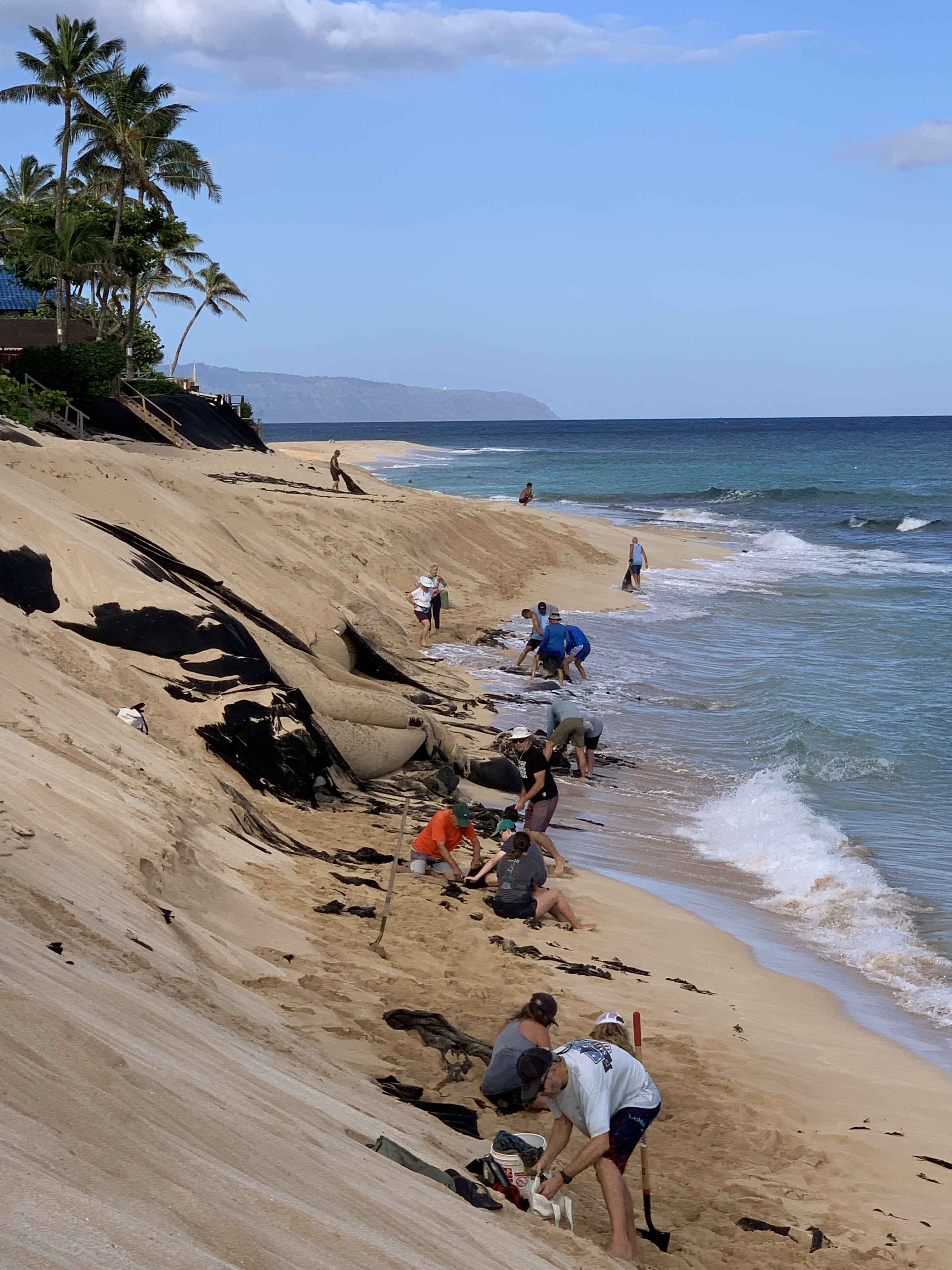
05 • 27 • 2025
Improve State Run Beach Restoration in Hawaiʻi
Victory! House Bill 1137 expanding the definition of Beach Restoration in Hawaiʻi signed to law
With chronic erosion, beach loss and sea level rise threatening the majority of Hawaiʻiʻs already diminished beaches, state agencies responsible for managing our shorelines need to have an adaptable toolbox of management strategies. Currently, that is not the case. The Division of Land and Natural Resources (DLNR) branch responsible for managing Hawaiʻis shorelines, the Office of Conservation of Coastal Lands (OCCL), manages the shoreline through a State Beach Fund.
OCCL can only use these funds on a very limited scope of 'beach restoration' activities, defined as 'the placement of sand, with or without stabilizing structures, on an eroded beach from an outside source such as offshore sand deposits, streams, channels or harbor mouths, or an upland sand quarry’. Sand nourishment is far from any lasting solution to address chronic beach loss and Sea Level Rise projection expected to be between 3.9-5.9 ft by 2100.
House Bill 1137 aims to update this definition to expand activities that are restorative to beaches including by amending the definition to include:
- Maintain and improve beaches and dune systems through management of sand and native dune vegetation
- Place sand on an eroded beach from an approved outside or adjacent source, with or without stabilizing structures; or
- Remove abandoned remnant materials from beaches and dunes that pose a risk to public health and coastal ecosystems; provided that emergency erosion protection structures constructed pursuant to permits issued by the department and that continue to provide the protection for which they were permitted shall not be deemed abandoned remnant materials.
Basically these amendments expand shoreline management strategies to include dune restoration and vegetation management but also importantly to allow for the removal of abandoned remnant materials including old WWII structures such as rebar left on the beach.
Hawaiʻi’s beaches are plagued with discarded temporary erosion measures including geotextile erosion skirts and sand burritos. While emergency permits specify a short time period before they need to be removed, oftentimes on account of sand migration and wave action, these erosion measures become covered and are never removed. The lifespan of many of these geo-textile fabrics are long outlived and they degrade- further polluting the ocean, waves, and beaches. The inclusion of removal of abandoned remnant materials within beach restoration is a vital step to cleaning up our beaches from materials that pose a public health risk to ocean users and the environment.
On May 27, 2025, Governor Green signed the bill to law (Act 102).
